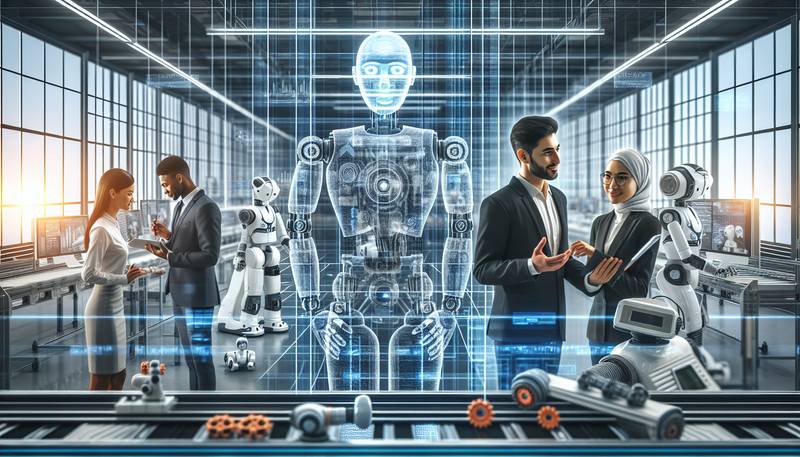Robots at Work: The Future of Automation and Employment

The Rise of Automation
Automation has been a buzzword in the workplace for quite some time now. With advancements in technology, robots and artificial intelligence (AI) are becoming more and more common in various industries. From manufacturing to healthcare, robots are taking over tasks that were once done by humans. The rise of automation has brought about a lot of excitement, but also a lot of concern. What does this mean for the future of employment? Will robots take our jobs?
The Benefits of Automation
Before we dive into the potential downsides of automation, let's first look at the benefits. For businesses, automation can lead to increased efficiency and productivity. Robots can work 24/7 without taking breaks, which means they can get more done in less time. This can lead to cost savings for companies and potentially lower prices for consumers.
Automation can also lead to safer workplaces. Robots can take on tasks that are dangerous for humans, such as working with hazardous materials or in extreme temperatures. This can lead to fewer workplace injuries and accidents.
Finally, automation can lead to new job opportunities. As robots take on more tasks, new jobs will be created to design, maintain, and operate these machines. These jobs will require new skills and training, but they have the potential to be high-paying and fulfilling careers.
The Downside of Automation
Now, let's talk about the potential downsides of automation. The biggest concern is job displacement. As robots take on more tasks, there is a fear that there will be fewer jobs available for humans. This is especially true for jobs that are repetitive and require little skill, as these are the easiest to automate.
There is also a concern that automation will lead to increased income inequality. As more jobs are automated, the demand for skilled workers will increase, while the demand for unskilled workers will decrease. This could lead to a widening gap between the rich and the poor.
Finally, there is a concern about the social implications of automation. As more jobs are automated, there may be fewer opportunities for social interaction in the workplace. This could lead to increased feelings of isolation and loneliness.
The Future of Automation and Employment
So, what does the future hold for automation and employment? It's hard to say for sure, but there are a few things we can predict. First, automation is not going to slow down anytime soon. As technology continues to advance, we can expect to see more and more robots in the workplace.
Second, the impact of automation on employment will vary by industry. For example, industries that are highly repetitive and require little skill, such as manufacturing, are more likely to be automated. On the other hand, industries that require creativity and human interaction, such as the arts and healthcare, are less likely to be automated.
Finally, the impact of automation on employment will depend on how we respond to it. If we invest in education and training, we can prepare workers for the new jobs that will be created by automation. If we implement policies that support workers who are displaced by automation, we can help them transition to new careers. The key is to be proactive and think about how we can use automation to benefit everyone, not just a select few.
Conclusion
In conclusion, automation is changing the way we work. While there are certainly concerns about job displacement and income inequality, there are also many benefits to automation. The key is to embrace the changes and prepare for the future. By investing in education and training, and supporting workers who are displaced by automation, we can create a future where robots and humans work together in harmony.
Remember, the future is not set in stone. We have the power to shape it and make it work for everyone. So let's get to work!


